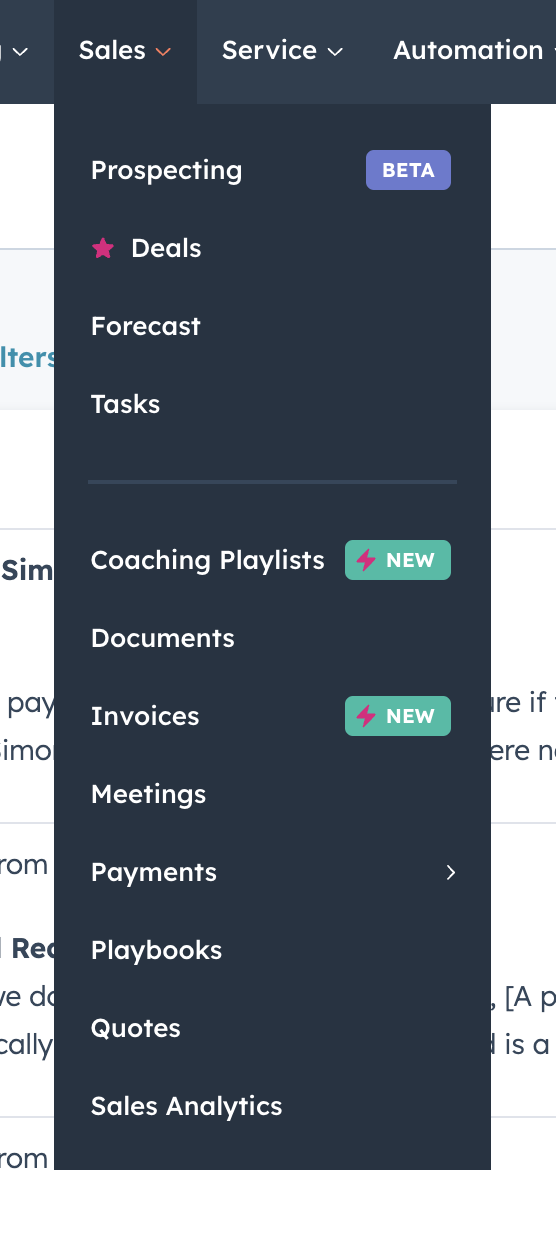At Real Inbound, we've seen a common thread in successful CRM implementations: strong, committed leadership. When leadership is actively involved, HubSpot adoption doesn't just succeed—it thrives.
On the flip side, when leadership is disengaged or merely delegating the process, the adoption struggles, and the potential of the CRM remains untapped.
But why is leadership so crucial in the adoption of HubSpot, or any CRM for that matter? And more importantly, how can your leadership team take charge of the process to ensure not just implementation, but full, effective adoption across your organisation?
In this article, we’ll explore the role of leadership in HubSpot adoption, the challenges leaders face, and how our HubSpot Adoption Gap Framework can empower your leadership team to drive successful adoption from the top down.
The Role of Leadership in HubSpot Adoption
CRM adoption isn’t just a technical project; it’s a cultural transformation. And like any cultural change, it needs to be driven by the leaders of the organisation. Here’s why leadership is so vital:
- Setting the Vision and Strategy: Leadership is responsible for setting the vision and strategy for the organisation.
When adopting HubSpot, it’s crucial that the leadership team clearly defines how the CRM will support the organisation’s overall goals. This means going beyond just implementing a tool—it’s about aligning HubSpot with your business strategy and ensuring that everyone understands its role in driving success.
- Aligning Teams and Resources: One of the key responsibilities of leadership is to align teams and resources with the strategic goals of the organisation.
In the context of HubSpot adoption, this means ensuring that all departments—sales, marketing, customer service, and beyond—are on the same page and working together towards a common goal. Leadership must break down silos and ensure that HubSpot is seen as a tool for the entire organisation, not just a specific department.
- Driving Engagement and Buy-In: Adoption won’t happen without buy-in from the entire organisation, and this buy-in starts at the top.
When leadership is visibly committed to HubSpot adoption, it sends a powerful message to the rest of the organisation. Leaders need to actively champion the CRM, communicate its benefits, and address any concerns or resistance that may arise. This level of engagement from leadership is critical for fostering a culture that embraces change.
- Overcoming Resistance to Change: Change is hard, and resistance is natural.
But when leadership takes an active role in the adoption process, they can help to overcome this resistance by demonstrating the importance of the change, providing the necessary support, and addressing any challenges head-on. Leaders can also model the behaviour they want to see—if they’re using HubSpot and showing its value, others are more likely to follow suit.
- Ensuring Accountability: Finally, leadership plays a key role in ensuring accountability throughout the adoption process.
This means setting clear expectations, monitoring progress, and holding teams accountable for their part in the adoption. Leadership should regularly check in on the adoption process, assess how well the CRM is being used, and take corrective action if necessary.
The Challenges Leaders Face in HubSpot Adoption
While leadership is crucial to successful HubSpot adoption, it’s not without its challenges. Here are some common obstacles leaders face, and how they can overcome them:
Lack of Familiarity with the Technology
Not all leaders are tech-savvy, and that’s okay. The key is not to know every detail of how HubSpot works, but to understand its strategic value. Leaders should focus on how HubSpot aligns with the organisation’s goals and how it can drive growth, rather than getting bogged down in the technical details.
Balancing Strategic Oversight with Day-to-Day Involvement
Leaders have a lot on their plates, and it can be challenging to balance strategic oversight with the day-to-day involvement required for successful adoption. The key here is delegation without disengagement. Leaders should empower key team members to manage the implementation, while still providing guidance, support, and oversight.
Managing Resistance and Driving Change
As mentioned earlier, resistance to change is a natural part of the adoption process. Leaders must be prepared to manage this resistance by communicating the benefits of the CRM, addressing concerns, and providing the necessary support to make the transition as smooth as possible.
Ensuring Consistent Communication
Communication is key to successful adoption, but it can be challenging to keep everyone informed and aligned. Leaders should establish regular communication channels, provide updates on the adoption process, and create opportunities for feedback and discussion.
Maintaining Momentum
HubSpot adoption is not a one-time event; it’s an ongoing process. Leaders need to maintain momentum by continuously monitoring progress, celebrating successes, and addressing any challenges that arise. This requires a long-term commitment and the ability to adapt to changing circumstances.
How the HubSpot Adoption Gap Framework Supports Leadership
Our HubSpot Adoption Gap Framework is designed to empower leadership teams to take charge of the adoption process and drive success from the top down. Here’s how:
- Developing a Leadership Action Plan: We work with your leadership team to develop a clear action plan that outlines each leader’s role in supporting the adoption. This plan ensures that leadership is actively involved at every stage of the process, from setting the vision to monitoring progress and ensuring accountability.
- Aligning the Organisation with Strategic Goals: Our framework helps leadership teams align HubSpot adoption with the organisation’s overall strategic goals. This ensures that the CRM is seen as a valuable tool for achieving business objectives, rather than just another piece of software. By aligning HubSpot with the strategic vision, leadership can drive meaningful, long-term change.
- Driving Engagement and Buy-In: We support leadership in driving engagement and buy-in across the organisation. This includes providing communication strategies, tools for addressing resistance, and techniques for fostering a culture of change. By actively championing the adoption, leadership can create a positive environment where everyone is on board.
- Ongoing Support and Monitoring: Adoption doesn’t end with implementation. Our framework includes ongoing support and monitoring to ensure that leadership remains engaged, and that the adoption process stays on track. We provide regular check-ins, feedback loops, and performance metrics to help leaders assess progress and make necessary adjustments.
Practical Steps for Leaders to Drive HubSpot Adoption
While the HubSpot Adoption Gap Framework provides a structured approach, there are practical steps that leaders can take to drive adoption within their organisations:
- Lead by Example: Use HubSpot yourself and demonstrate its value to your team. When leaders are actively engaged with the CRM, it sets a powerful example for the rest of the organisation.
- Communicate the Vision: Clearly articulate the strategic vision for HubSpot and how it aligns with the organisation’s goals. Make sure everyone understands why the CRM is important and how it will benefit the organisation.
- Create a Supportive Environment: Provide the necessary resources, training, and support to help your team succeed with HubSpot. Address any concerns or challenges that arise, and create an environment where employees feel comfortable asking for help.
- Monitor Progress and Provide Feedback: Regularly check in on the adoption process, assess progress, and provide feedback to your team. Celebrate successes and address any areas where improvement is needed.
- Be Patient and Persistent: Adoption takes time, and there will be bumps along the way. Be patient with the process, but also be persistent in driving the change. Keep your team focused on the long-term benefits and continue to champion the adoption.
Conclusion - Leadership is Key to Successful HubSpot Adoption
In summary, leadership is the driving force behind successful HubSpot adoption. It’s not just about implementing a new tool; it’s about leading a cultural shift within your organisation.
By taking an active role in the adoption process, setting a clear vision, aligning your teams, and providing the necessary support, leadership can ensure that HubSpot becomes a valuable, fully integrated tool that drives growth and success.
At Real Inbound, we’re here to support you every step of the way. Our HubSpot Adoption Gap Framework is designed to empower your leadership team to take charge of the adoption process and ensure long-term success.
Together, we can bridge the gap and unlock the full potential of HubSpot for your organisation.
Ready to lead the charge? Contact us today to learn more about how we can help you drive successful HubSpot adoption from the top down.







